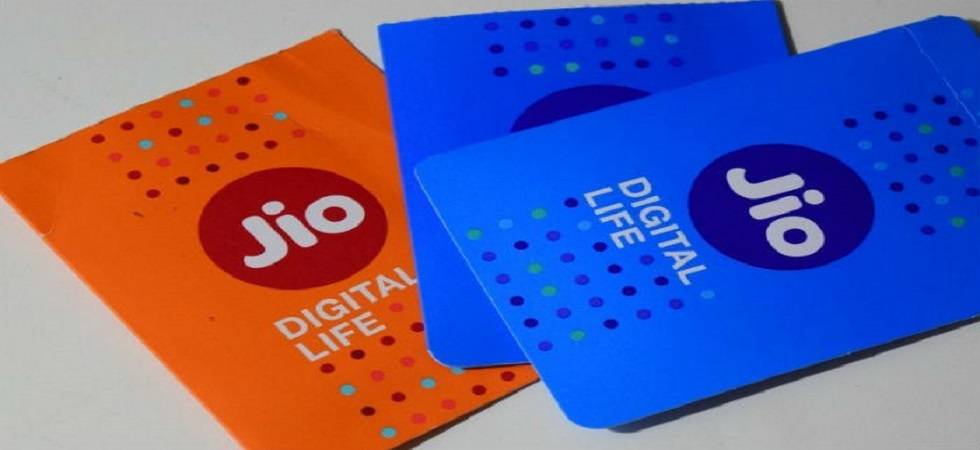

Jio sprints past Bharti in subscriber numbers, but revenue per unit falls

Reliance Jio Infocomm (Jio) was the last operator to enter the crowded Indian telecom market less than three years ago (December 27, 2015). A steady focus on adding subscribers through unheard of freebies –free voice services, cheap data plans – has reaped rich dividends for this company.
The latest report by the Telecom Regulatory Authority of India (TRAI) shows Jio has sprinted ahead of erstwhile market leader Bharti Airtel in terms of subscribers, becoming the number two operator behind the Vodafone-Idea combine.
Jio’s market share in May was 27.8% with almost 323 million subscribers against Bharti’s 27.58% at 320 million subscribers. Just a year ago, in May 2018, Jio held under 20% share of wireless telecom market share at 18.17% while Bharti was at 30.46%.
In May this year, TRAI data pegs subscriber market share of Vodafone-Idea combine at 33.36% against 38.61% in May 2018, when the two operators were separate entities. Since they two were separate entities, Bharti was the market leader in subscribers in May last year. Twelve months later, not only has it surrendered the leadership position to the merged entity (Vodafone-Idea combine) but has now also fallen behind RJio to come at the third spot.
Also read: Mukesh Ambani keeps salary capped at ₹15 cr for 11th yr in a row
RJio’s pricing aggression since launch in September 2016 steadily changed the dynamic of India’s telecom industry. In this timeframe, not only has the pecking order of service providers changed, industry-wide profit markers and goalposts have also been irretrievably altered. Analysts at brokerage Edelweiss noted earlier this month that RJio unleashed “one of the most brutal price wars in India’s telecom market. Consequently, industry ARPU (average revenue per user) plunged 38%, leading to total industry size shrinking to Rs 1.4 lakh crore from Rs 1.8 lakh crore.” Before Jio’s arrival, industry ARPU – how much a wireless telecom subscriber was paying on an average – was Rs 156 but this dipped to Rs 98 by the December quarter of 2019.
However, continued subscriber addition has not lessened RJio’s focus on adding more subscribers going forward, even at the cost of per unit revenue. While subscriber addition has catapulted it to the second position, falling average revenue per user (ARPU) has pushed it well behind Bharti and Vodafone-Idea combine. Edelweiss analysts said in another note that Jio reported lower-than-expected revenue growth of 5.2% quarter-on-quarter for the April-June period this year due to sharper-than-expected decline in ARPU to Rs 122 against analysts’ estimate of Rs 124 estimate and even lower than the Rs 126 it was earnings in the January-March quarter this year.
Analysts said that “ARPU decline is attributed to: customers moving to long-term plans; rising proportion of low-ARPU JioPhone users and higher promotions of digital recharge leading to higher cash-backs. RJio continues to focus on subscriber acquisition and user engagement.”
Such single-minded focus on subscriber additions indicates that the telecom operator is unlikely to raise prices anytime soon, certainly not until it reaches the 400 million subscriber mark, which analysts say could be the next turning point. This is a cause for worry for other telcos, who have been reeling under intense competitive pressure brought on by Rjio. Edelweiss analysts said that with increasing cost of operations, “we expect Jio to start raising prices from January-March quarter in 2020 to improve return ratios.”
As the much-anticipated price increase by Jio gets pushed to next calendar year, India’s telecom industry worries about its precarious financials. The analysts quoted earlier said that sale of non-core assets by all the three big telecom operators will be a key trigger for industry recovery. The telecom industry is saddled with almost Rs 4 lakh crore net debt, these analysts said. “This has prompted massive deleveraging drive by telecom companies by equity infusion (Rs 500 billion) as well as sale of non-core assets (pegged at a staggering Rs 2,270 billion led by Jio).
Also read: Economic Survey preaches what the government doesn’t want to practise
However, weak financials of telecom operators — customers of fiber and tower assets — could weigh on investors’ appetite in buying these assets. Hence, improvement in ARPU leading to industry recovery is necessary for all operators to deleverage by selling non-core assets.”
Not only has Jio’s relentless quest for subscribers wreaked havoc on incumbent telecom operators, a precarious and combative telecom industry is now unfit for a swift jump to next generation technology since that needs massive investments. Analysts at rating agency Crisil have said that ‘fiberisation’, which is crucial to adoption of 5G technology, is expensive and will come in addition to spectrum costs that are sky-high at current prices.
Crisil has reiterated that telcos are saddled with a staggering debt of about Rs 4.3 lakh crore as of March 2019. “That is why India is set to witness some tectonic shifts in the fiberisation landscape and the birth of new business models among telcos and tower companies around the launch of 5G. 5G technology dictates fiberisation levels of over 70%, versus 25-30% levels at present. CRISIL estimates that if each player were to reach this level individually, Indian telcos may need investments of up to Rs 1 lakh crore only in laying fibre networks over the next 2-3 years. Higher land cost and right of way approvals make fiberisation cost per km as high as Rs 1 crore per km in metros. Then, there are also the spectrum purchase costs in the upcoming auctions to shell out. Players could restrict 5G launch in the initial years to metros and select circle ‘A’s that show high data consumption appetite. Or, they could evolve business models for sharing fibre infrastructure.”


